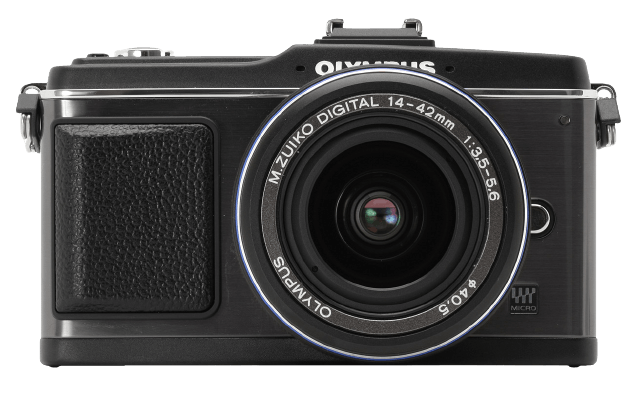Olympus PEN E-P2 Specs and Scores

The Olympus PEN E-P2 receives a score of 40/100 for its general specifications. Announced on November 5, 2009, and released the same year, this mirrorless camera has a launch price of $1100. The camera measures 121 x 70 x 36mm and weighs 355g or 0.78lbs.
When compared to today’s market, the E-P2’s specifications may not be as competitive. Nonetheless, this camera still offers a solid option for those seeking a lightweight and compact device.
Olympus PEN E-P2 Overview and Optics
The Olympus PEN E-P2 receives a score of 45/100 for its optics. This camera features a 12.3-megapixel NMOS sensor and a TruePic V processor, which results in a DXOMARK score of 56 for the sensor. With a shooting speed of 3 frames per second, the E-P2 may not be the fastest option in the market.
This camera uses a Micro Four Thirds sensor size and a Micro 4/3 lens mount, which offers versatility in lens options. The E-P2 has image stabilization, ensuring steady and clear shots. Its 4:3 aspect ratio is suitable for most photography needs.
Despite these features, the Olympus PEN E-P2’s optics may not be the most competitive in today’s market. However, it still provides decent image quality and lens flexibility for casual photographers.
Olympus PEN E-P2 Video Performance
The Olympus PEN E-P2 lacks video capabilities. This camera focuses on photography and does not offer video recording.
Olympus PEN E-P2 Features and Benefits
The Olympus PEN E-P2 features a score of 36/100 in terms of its specifications. This camera comes with a 3-inch screen, offering a resolution of 230,000 dots. However, it does not have a touchscreen, flip screen, GPS, WIFI, or Bluetooth capabilities.
Comparing these features to other cameras in today’s market, the E-P2 falls short in several aspects. Modern cameras typically include touchscreens, flip screens, and wireless connectivity options such as WIFI and Bluetooth. These features make it easier for photographers to capture and share their work. The lack of GPS also limits the ability to geotag photos, which can be a valuable tool for organizing and documenting images.
The Olympus PEN E-P2, with its limited specifications, may not be the most competitive option for photographers seeking advanced features and connectivity. While it provides a basic shooting experience, it lacks the modern advancements that many users have come to expect in a camera.
Olympus PEN E-P2 Storage and Battery
The Olympus PEN E-P2 receives a storage and battery score of 16/100. This camera has only one memory card slot, accepting SD and SDHC cards. In comparison to other cameras in today’s market, the single slot may be limiting for some users. The battery life of the E-P2 allows for 300 shots with the BLS-1 battery type. This battery life is relatively low, as many modern cameras offer longer-lasting batteries. Additionally, the E-P2 does not support USB charging, making it less convenient for on-the-go users. These factors contribute to the low score in this category.
